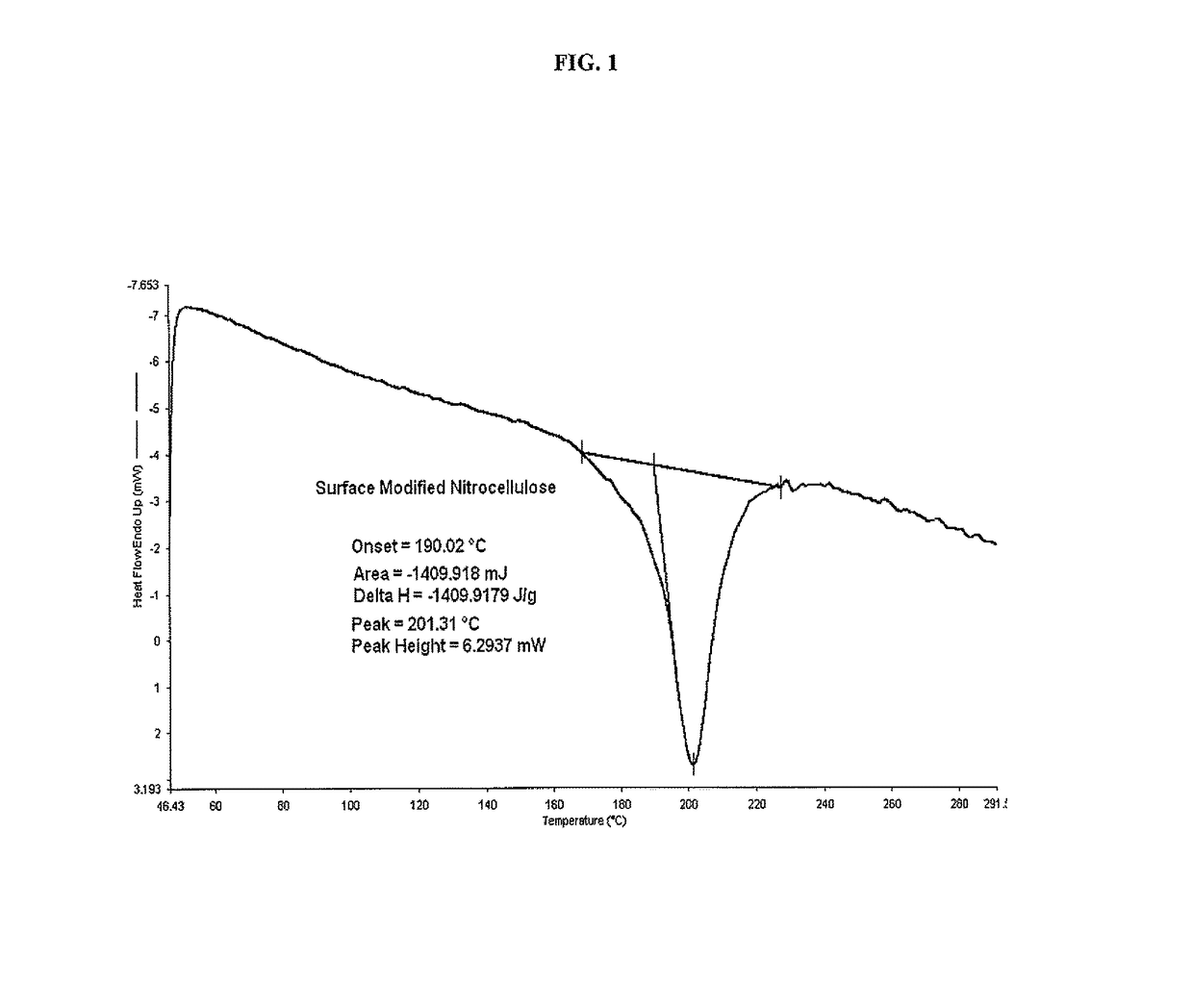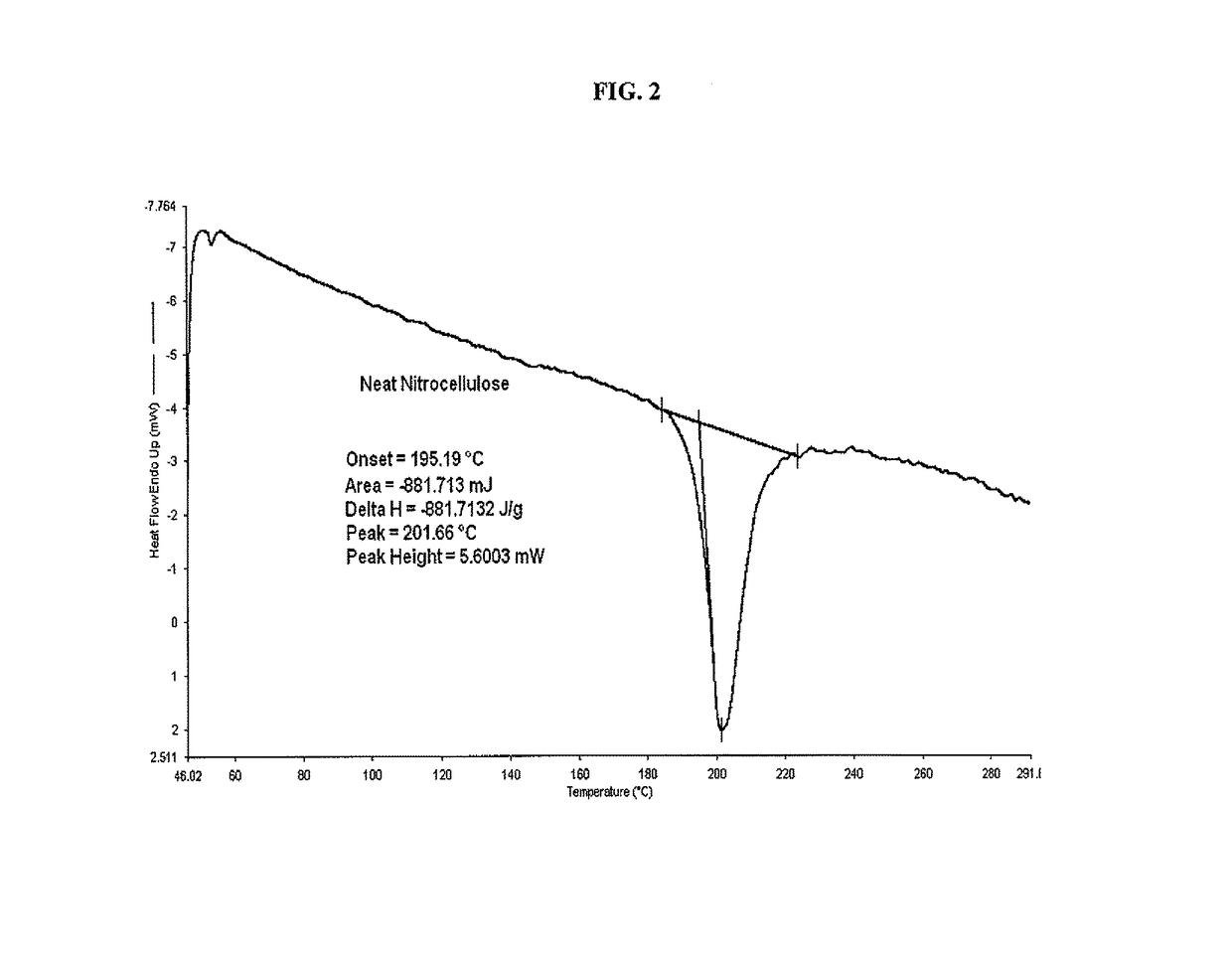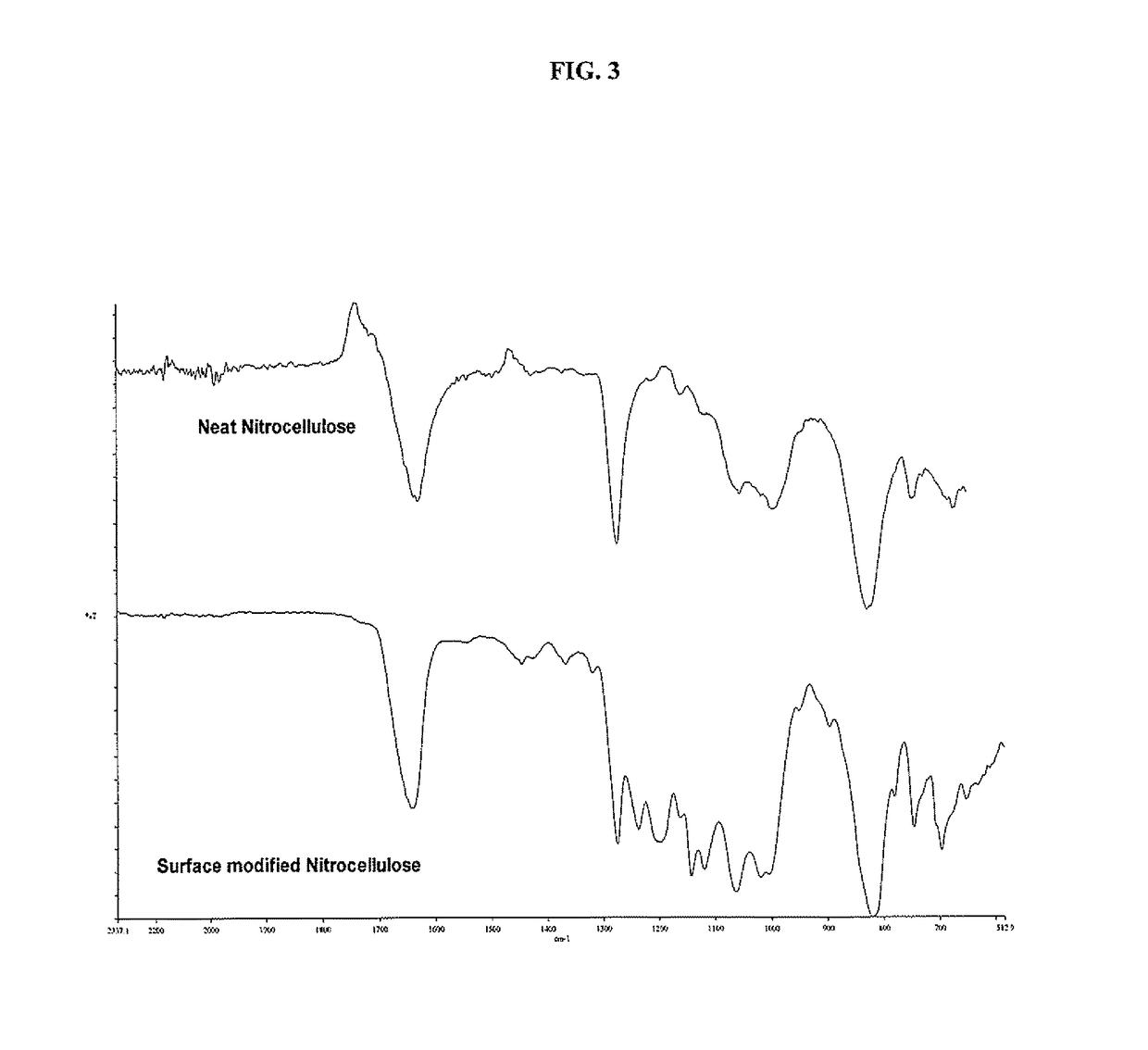Methods for modifying nitrocellulose having lyophobic properties
- Summary
- Abstract
- Description
- Claims
- Application Information
AI Technical Summary
Benefits of technology
Problems solved by technology
Method used
Image
Examples
example 1
[0033]Dissolve 2.0 grams of either 11.05% or 13.14% nitrocellulose in 50 ml of tetrahydrofuran (THF) and stir for forty eight hours in a moisture free environment. This allows sufficient time to completely expose the nitrocellulose polymer chain for hydroxyl group interaction with the isocyanate. Add 1 ml of 3-(triethoxysilyl) propyl isocyanate dropwise. Add 3 milliliters of dibutyl tin dilurate as the reaction catalyst and stir for a minimum of 4 hours up to 24 hours to ensure complete reaction of the isocyanate. Open reaction vessel for slow exposure to atmospheric moisture for slow hydrolysis. Excess THF may be added to compensate for solvent evaporation. Add 1 ml of (tridecafluoro-1,1,2,2-tetrahydrooctyl) trimethoxysilane and stir for 24 hours to allow for complete reaction to occur. Separate the reacted material with 50 ml of water or other suitable solvent. The solid material is then filtered and washed several times with excess water. The functionalized nitrocellulose is then...
PUM
| Property | Measurement | Unit |
|---|---|---|
| Time | aaaaa | aaaaa |
| Ratio | aaaaa | aaaaa |
Abstract
Description
Claims
Application Information
 Login to View More
Login to View More - R&D
- Intellectual Property
- Life Sciences
- Materials
- Tech Scout
- Unparalleled Data Quality
- Higher Quality Content
- 60% Fewer Hallucinations
Browse by: Latest US Patents, China's latest patents, Technical Efficacy Thesaurus, Application Domain, Technology Topic, Popular Technical Reports.
© 2025 PatSnap. All rights reserved.Legal|Privacy policy|Modern Slavery Act Transparency Statement|Sitemap|About US| Contact US: help@patsnap.com



